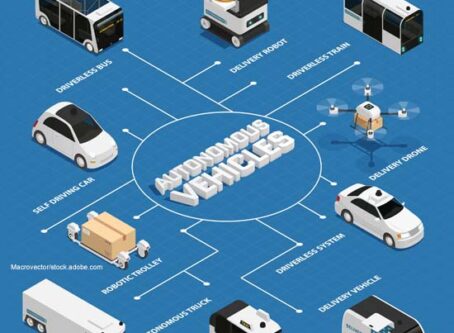ATRI report suggests government is falling behind on AV policy
According to an American Transportation Research Institute report, federal and state governments are falling way behind automated vehicle technology.
On Monday, Jan. 13, ATRI released a report titled “Redefining the Role of Government Activities in Automated Trucking.” In the report, ATRI highlights actions, or the lack thereof, the government has taken to get automated trucks on the road.
Patchwork policies
At the federal level, no official legislation that addresses automated trucks has been signed into law.
“While both Congress and the American Association of State Highway and Transportation Officials are separately pursuing a national vision, no one appears to be developing a comprehensive roadmap for fostering all of these emerging technologies in the trucking industry,’ ATRI points out.
In September 2017, Sen. John Thune, R-S.D., introduced the AV START Act. A few months earlier, Rep. Robert Latta, R-Ohio, introduced the SELF DRIVE Act in the House. However, not only did neither bill address trucks, but both bills failed. The House bill passed but never made it past the Senate Committee on Commerce, Science and Transportation. The Senate bill passed the committee but never made its way to the Senate floor.
Because federal action has fallen flat, states have been forced to come up with their own automated vehicle plan.
Consequently, a patchwork of varying policies state by state has been created. With no consistency among state laws, advancement in AV technology for interstate applications, including trucking, has been stalled.
“Due to the complexity of navigating around a patchwork of state laws in interstate commerce, the potential use cases for AV technologies could be limited to local or regional operations in locations with favorable regulatory frameworks,” ATRI states. “More specifically, a fragmented regulatory landscape across states will hinder their deployment in interstate trucking where the potential is highest for highly automated technologies to handle operations on long stretches of interstate.”
In its report, ATRI recommends stronger federal leadership in establishing national policy and AV standards. The institute also recommends the federal government determine the top decision-making agency for AV policy and establish a clear hierarchy for regulatory agencies. Doing so will likely reduce any confusion or conflicts.
Meanwhile, states can work together for more consistency. ATRI recommends that states coordinate with each other to develop a standardized product liability policy for AV technologies.
AV 4.0 falls flat
ATRI’s report comes less than a week after the U.S. Department of Transportation released “Ensuring American Leadership in Automated Vehicle Technologies: Automated Vehicles 4.0.” Informally known as AV 4.0, the document is the fourth version of federal guidelines for automated vehicles.
However, neither version of the AV guidelines includes any legislative or regulatory action or recommendations. Rather, all four versions are at best loose, voluntary recommendations. Several safety groups were not impressed with AV 4.0 and the preceding versions.
“The latest attempt by the U.S. Department of Transportation to update autonomous vehicle policy is a rehashed, regurgitated and poorly reconstituted version of voluntary guidelines, the same hands-off approach we have seen in previous years,” Cathy Chase, president of Advocates for Highway and Auto Safety, said in a statement. “AV 4.0 is a 4.NO.”
“Automated Driving Systems: A Vision for Safety,” or AV 2.0, focused on industry. AV 2.0 is notable for establishing the Voluntary Safety Self-Assessment for automated car manufacturers. Trucks were exempt for AV 2.0. However, “Preparing for the Future of Transportation: Automated Vehicles 3.0” (AV 3.0) is mostly known for including commercial vehicles in the conversation.
AV 4.0, expanded on the previous versions. More specifically, the update explains which federal departments and agencies are responsible for which aspect of automated vehicles. Like the versions before it, AV 4.0 does not spell out any legislative or regulatory recommendations that would result in more legally binding guidelines. For the most part, AV 4.0 still leaves states waiting in limbo for clear federal guidance regarding AV policies.









